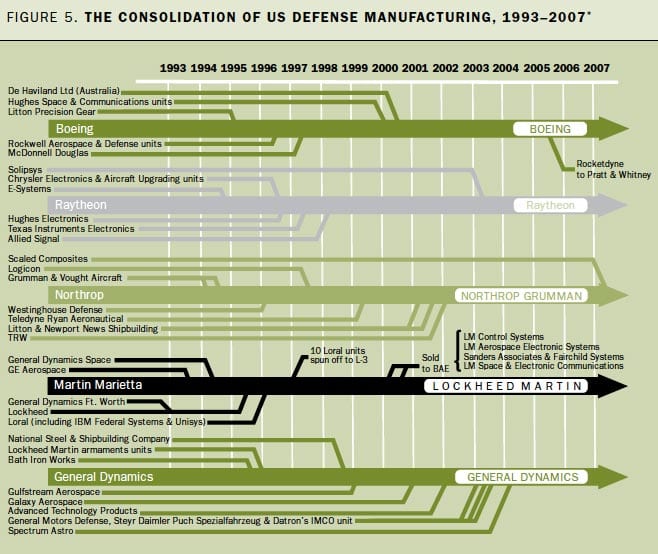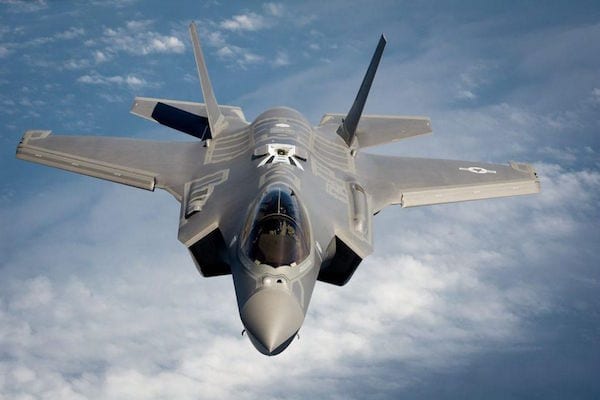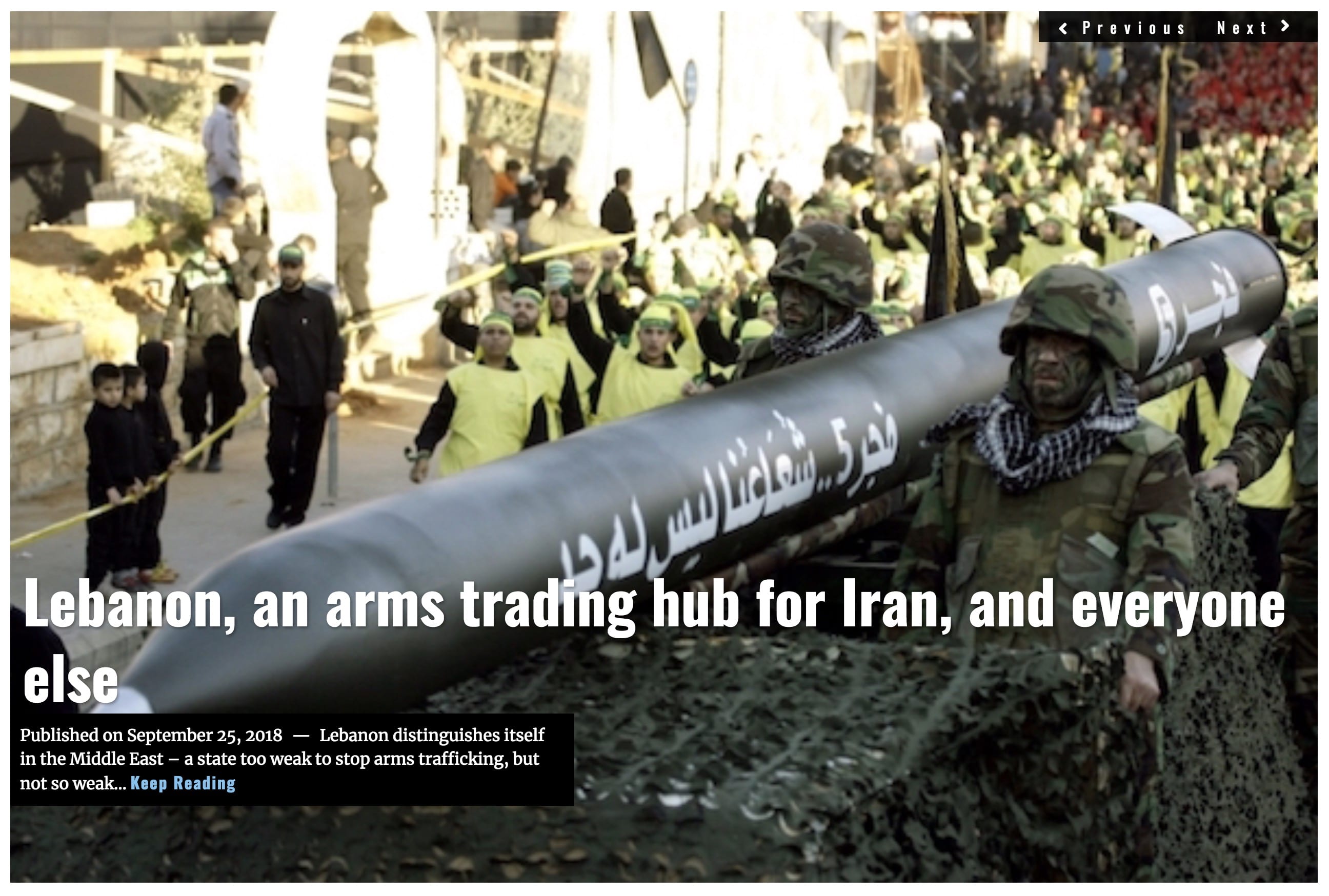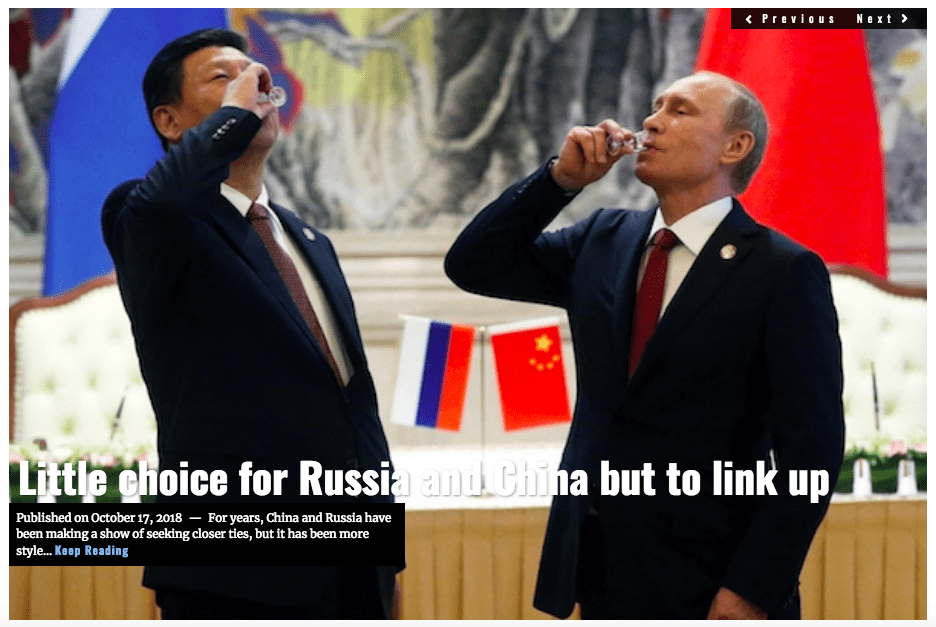A two decade taxpayer-subsidised merger & acquisition spree has turned the Military Industrial Complex into something that would be totally unrecognizable to President Dwight D. Eisenhower.
In 2017, Lockheed accrued $35 billion in defense contracts, relative to $21 billion from its nearest competitor, Boeing. This gulf in contracts exists in spite of Boeing and Lockheed funneling comparable amounts to U.S. politicians – $10,300,000 from Lockheed and $10,500,000 from Boeing.
Lockheed’s triumph is not coincidental; it is the product of a long-term strategy created by the company’s management and the U.S. government. “We believe in the wisdom once expressed by the hockey star Wayne Gretzky, who explained his success by saying, ‘I skate to where the puck is going to be, not where it has been,’” said Norman Augustine, the CEO of what would become Lockheed Martin since the 1990s.

The “going to be” pattern Augustine foresaw was a sea of change in American arms manufacturing. For decades, a multiplicity of arms manufacturers across the states constituted the U.S. arms industry. These materialized with the U.S. entry into World War II. As the nation mobilized, the military budget increased 48 times over and businesses scrambled to get a piece of the action. By the early 1950s, the industry had coalesced into the “Military – Industrial Complex” which then President Dwight D. Eisenhower warned against in his farewell address.
“This conjunction of an immense military establishment and a large arms industry is new in the American experience. The total influence — economic, political, even spiritual — is felt in every city, every State house, every office of the Federal government,” said President Eisenhower.
What followed were four consecutive decades of the Cold War and high military spending, growth that came to an abrupt halt following the collapse of the USSR.
In 1993, Secretary of Defense William Perry famously held a “Last Supper” for representatives of the top defense firms of the time, at which he broke the news: “We expect defense companies to go out of business, and we will stand by and let that happen.”
“Following that meal, it became evident that there were only two potential survival strategies. One was to move into new markets— a difficult and time-consuming option that has rarely succeeded. The other entailed something almost as difficult: increasing market share in existing markets during a period of severely declining business,” said Augustine.
Mr. Augustine, then CEO of prominent defense contractor Martin Marietta, pursued the acquisition of aeronautics and electronics firms, anticipating that these would be growth industries whenever military spending resumed. Throughout, Augustine assiduously maneuvered for political advantage.
Secretary Perry, working with the Deputy Secretary of Defense and later CIA Director John Deutch, did more than stand by; he facilitated the mergers by providing Pentagon subsidies for the severance packages of executives made redundant by mergers. Augustine capitalized on this policy, pursuing the most aggressive series of mergers in the defense industry.
Senator Bernie Sanders called out this process in 1996, dubbing it “Payoffs for Layoffs” and condemned the government for leaving laid-off workers high and dry while executives enjoyed golden parachutes at the taxpayer’s expense.
Augustine himself benefited from this arrangement, when he stepped down as CEO of Martin Marietta as the company merged with Lockheed Martin. Prior to taking over the newly formed Lockheed Martin, Augustine took a $8.2 million severance package. Augustine later donated $2.9 million – the amount eligible for federal subsidy – to charity to “avoid the appearance of personal enrichment.”
Amidst the cuts, one plant was notably passed over for most of the 1990s: the Marietta facility, which still employed nearly 10,000 by 1998, in the district of then-speaker Newt Gingrich (R- G). The relationship paid off for Lockheed Martin in assorted ways. Most notably, a request by the Pentagon for $59 million in C-130 transport planes morphed into $500 million as it passed through the committee the speaker chaired. In the year following Gingrich’s resignation in 1998, Lockheed Martin closed 40 factories at the Marietta facility.

Lockheed Martin has already achieved fame for its ability to get its biggest priorities met by the Congress, most evident in the research development of the F-35 fighter. Much of this defense spending comes from the National Defense Authorization Act (NDAA), a series of United States federal laws specifying the annual budget and expenditures of the U.S. Department of Defense.
The NDAA is one of the few pieces of legislation that passes through without a great deal of partisan bickering. With the legislature passing a historically low number of bills (averaging around 100 a year during the Obama Presidency, down from 500 a year during the Eisenhower Presidency), the annual NDAA presents a golden opportunity to attach pet provisions to a bill that has passed every year since 1961.
Members of Congress regularly embellish the Pentagon’s budget requests. For example, this year the Pentagon requested 10 ships, but Congress sent 13 – two littoral combat ships (LCS) manufactured by Lockheed Martin and an aircraft carrier were not ordered, but were provided anyway.
![Image US Defense Spending Comparison 2018 [Peter G. Peterson Foundation]](https://limacharlienews.com/wp-content/uploads/2018/10/US-Defense-Spending-Comparison-2018.gif)
The company has continued its strategy of mergers and acquisitions. In 2015, Lockheed Martin made its largest merger since its union with Martin Marietta in 1995, buying helicopter manufacturer Sikorsky Aircraft for $7 billion. The deal was actually for $9 billion, however, its structure enabled a $2 billion tax write off. At the time, Sikorsky Aircraft employed 8,000 people in Connecticut.
“I think the people in the Connecticut delegation will probably be feeling warmly toward Lockheed and even might be more receptive to their requests regarding other programs — even ones that aren’t manufactured in Connecticut,” said longtime Connecticut Senator Joe Lieberman, explaining the legislative implications of the 2015 deal.
And this year, when the Trump administration planned to cut $327 million in funding for Black Hawk helicopters, with Sikorsky Aircraft manufactures, the Connecticut delegation went to work, engaging in a campaign of letter writing, meetings and pressure towards administration officials during congressional committee questioning.
According to Mackenzie Eaglen, a defense specialist at the influential American Enterprise Institute:
“The United States now fields a military that could not meet even the requirements of a benign Clinton-era world. The services have watched their relative overmatch and capacity decline in almost every domain of warfare . . . for nearly two decades. As rival nation-states have accelerated their force development, the Department of Defense has stalled out, creating a dangerous window of relative military advantage for potential foes. . . . While the United States continues to field the best military personnel in the world, policy makers have asked them to do too much with too little for too long.”
Fox News recently reported that the Air Force had designed a coffee cup that costs approximately $1,220 each. Two years ago, they bought 10 cups for $9,630, and this year, they purchased 25 more for $32,000.
“Unfortunately when dropped the handle breaks easily leading to the expenditure of several thousand dollars to replace the cups as replacement parts are not available,” said Tech. Sgt. James Hodgman, a squadron spokesman.
Diego Lynch, LIMA CHARLIE NEWS
[Subscribe to our newsletter for free and be the first to get Lima Charlie World updates delivered right to your inbox.]
Lima Charlie provides global news, featuring insight & analysis by military veterans, intelligence professionals and foreign policy experts Worldwide.
For up-to-date news, please follow us on twitter at @LimaCharlieNews
In case you missed it:





](https://limacharlienews.com/wp-content/uploads/2018/08/XBVUKTNZ5BHAJJOW22KSUJHS74-480x384.jpg)



![Africa’s Elections | In Malawi, food, land, corruption dominate [Lima Charlie News]](https://limacharlienews.com/wp-content/uploads/2019/06/Malawi-election-Food-land-corruption-480x384.jpg)
![Syria’s oil, gas and water - the Immiscible Solution to the War in Syria [Lima Charlie News][Photo: ANDREE KAISER / MCT]](https://limacharlienews.com/wp-content/uploads/2019/05/Syria’s-oil-gas-and-water-480x384.png)
![Image The Rwandan Jewel - Peacekeepers, Conflict Minerals and Lots of Foreign Aid [Lima Charlie World]](https://limacharlienews.com/wp-content/uploads/2019/03/Rwanda-Jewel-480x384.jpg)
![Image Russia's energy divides Europe [Lima Charlie News]](https://limacharlienews.com/wp-content/uploads/2019/03/Russias-energy-divides-Europe-Lima-Charlie-News-480x384.png)
](https://limacharlienews.com/wp-content/uploads/2018/08/XBVUKTNZ5BHAJJOW22KSUJHS74-150x100.jpg)
